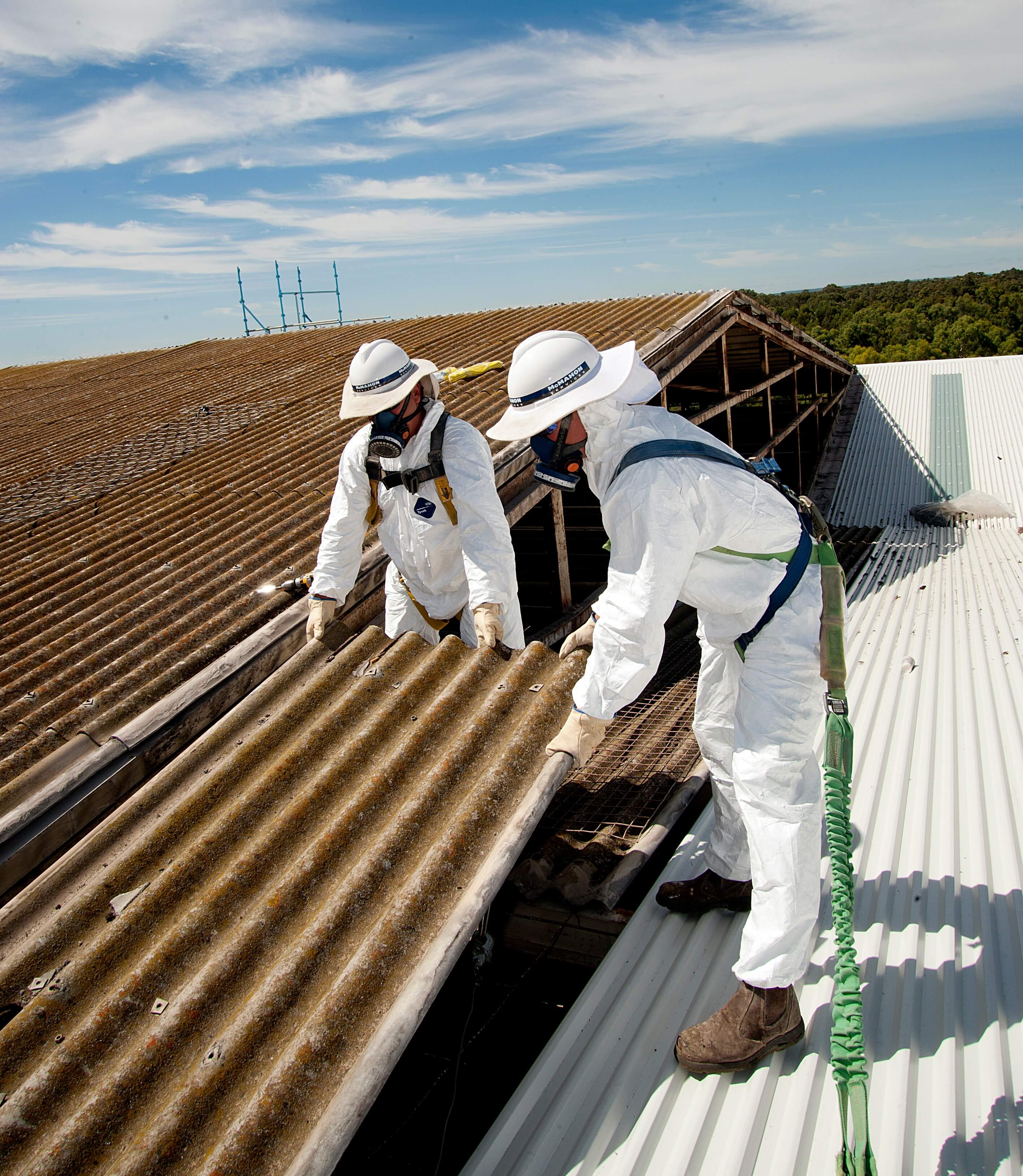Best Practices For Asbestos Roof Removal In Sydney How To Get Your Roof Replaced For Under 1000
Asbestos management plans are critical tools for the safe handling and management of asbestos materials in numerous environments. With the health risks related to asbestos exposure, including lung disease and different serious respiratory circumstances, having a comprehensive management plan is essential for any facility that will include asbestos.
The creation of asbestos management plans includes a thorough assessment of the premises the place asbestos could be present. This includes figuring out the forms of materials that include asbestos and evaluating their situation. Regular inspections are necessary as a end result of the integrity of asbestos-containing materials can degrade over time, raising the chance of airborne asbestos fibers.

Once the assessment is conducted, the plan must embody clear procedures for managing asbestos safely. This contains guidelines on how to handle, keep, and, if necessary, take away asbestos-containing materials. Proper labeling and signage are additionally important to ensure that staff and visitors are aware of areas which will pose a risk.
Safe Asbestos Roof Removal Techniques Safe, Reliable And Experienced Removal Services
Training and training play a big function in the successful implementation of asbestos management plans. Employees who may come into contact with asbestos must be educated about the hazards, safe work practices, and emergency procedures. Regular training classes may help hold safety at the forefront of office tradition.
The management plan should define specific obligations for employees and management. Designating an asbestos coordinator can streamline the process of monitoring, reporting, and speaking about asbestos-related issues. This particular person serves as a degree of contact for questions and issues relating to asbestos safety.
Documentation is a key facet of asbestos management plans. Maintaining correct data of inspections, incidents, training, and maintenance actions is essential for accountability and ongoing risk assessment. This documentation can even show invaluable in case of regulatory inspections or legal inquiries.
Asbestos Removal Certification In Sydney Cost Guide For Asbestos Removal
In addition to figuring out materials and implementing safe handling practices, the plan must define response protocols for asbestos-related emergencies. Community Awareness About Asbestos Roof Dangers. These protocols ought to include measures to observe in the event of a material breach or suspected fiber release. Providing clear steps might help mitigate risks and guarantee swift motion
Periodic review and updating of the asbestos management plan are vital to reflect any modifications in regulations, office conditions, or materials current. Continuous improvement is important to adapt to new data or technologies related to asbestos safety. Stakeholders must be concerned on this process to ensure that the plan stays related and effective.
Aftercare Following Asbestos Roof Removal How To Get Your Roof Replaced For Under 1000
Compliance with native and nationwide regulations relating to asbestos is non-negotiable. Organizations should keep informed about applicable laws and guidelines that govern asbestos handling and disposal. This helps avoid legal penalties and enhances the general safety culture within the group.
Community awareness is one other necessary think about effective asbestos management plans. Engaging with native authorities, health companies, and the community can foster a higher understanding of asbestos-related points. This collaboration ensures that every one parties are knowledgeable about potential risks and safety measures in place.
Asbestos management plans do not operate in isolation; they're part of a broader health and safety technique. By prioritizing the well-being of staff and the surrounding community, organizations can contribute to a safer environment. The integration of asbestos management with different safety protocols allows for a holistic approach to workplace safety.
Asbestos Roof Removal Service Reviews And Feedback Removal And Disposal Of Asbestos
The aim of an asbestos management plan isn't just compliance but in addition proactive risk management. By effectively identifying hazards and implementing mitigation strategies, organizations can significantly reduce the probability of asbestos exposure. This commitment to safety ultimately protects both employees and the bottom line.
Effective communication concerning the asbestos management plan is important for fostering a culture of safety. Clear dissemination of information ensures that everybody understands the risks and the measures in place to mitigate them. Providing transparent reporting channels encourages workers to voice issues and contribute to safety efforts.
Finally, the importance of periodic monitoring can't be overstated. Regular audits of the asbestos management plan help identify areas for enchancment and verify that safety measures are followed. Continuous evaluation creates a feedback loop, promoting a safer working environment.
In abstract, asbestos management plans function crucial frameworks for controlling and managing the risks related to asbestos exposure. Through thorough assessment, effective communication, ongoing training, and common updates, organizations can create safe environments for their employees and the community. The focus ought to at all times be on proactive measures, compliance with regulations, and a robust safety culture.
How To Prepare For Asbestos Roof Removal Risks Associated With Asbestos Roofs
By guaranteeing that each side of the plan is well-executed, organizations can significantly lower the risks tied to asbestos materials. This ongoing commitment to safety is not going to only protect people but in addition improve organizational reputation and trust.
Continuous adaptation and refinement of asbestos management plans will finally lead to a more knowledgeable workforce that prioritizes safety above all. Such a tradition is essential for attaining long-term safety goals and guaranteeing the health of all stakeholders concerned.
Community Awareness About Asbestos Roof Dangers What To Do If You Find Asbestos
Ultimately, the well-being of employees and the environment should guide the event and implementation of any asbestos management strategy. By remaining vigilant and diligent of their strategy, organizations can navigate the complexities of asbestos management effectively.
In conclusion, the roadmap for asbestos safety is difficult however vital. A carefully crafted and executed asbestos management plan, full with thorough assessments, communication protocols, and ongoing training, lays the groundwork for a secure and compliant workplace. This proactive method fosters a protective environment for all these concerned, solidifying the dedication to safety for the future.
- Asbestos management plans outline protocols for identification, assessment, and management of asbestos-containing materials in various settings, significantly in buildings.
- Regular inspections and risk assessments are important components of an asbestos management plan, making certain ongoing monitoring and up to date data regarding potential hazards.
- Training for personnel on asbestos awareness and safety measures is important, guaranteeing that staff are knowledgeable concerning the risks and procedures related to asbestos exposure.
- Development and maintenance of a listing of asbestos areas, types, and circumstances enable for knowledgeable decision-making when planning renovations or demolitions.
- Emergency response procedures tailor-made for asbestos-related incidents help reduce health risks during sudden situations involving asbestos disturbance.
- Effective communication strategies within an organization inform all stakeholders of asbestos management plans, highlighting responsibilities and encouraging a culture of safety.
- Documentation of all asbestos-related actions, including removal, encapsulation, or repair, is important for compliance with regulatory standards and for future reference.
- Stakeholder engagement, including occupants and neighboring properties, is vital to raise awareness and handle issues relating to asbestos management and safety practices.
- Integrating asbestos management plans with total health and safety policies can create a cohesive approach to office safety and environmental health.
- Regular evaluations and updates of the asbestos management plan ensure relevance and effectiveness, adapting to any modifications in regulations, building occupancy, or material condition.undefinedWhat are asbestos management plans?
Post Asbestos Roof Removal Cleaning Removal & Replacement Of Roof Asbestos

Asbestos management plans are documents that outline the method to manage asbestos on a property. They detail the placement, condition, and kinds of asbestos-containing materials, together with strategies for safe monitoring, maintenance, and mitigation.
Why do I want an asbestos management plan?
An asbestos management plan is crucial for protecting health and safety. It ensures that each one potential asbestos hazards are identified and managed appropriately, minimizing the chance of exposure to individuals on the property.
Choosing The Right Method For Asbestos Roof Removal How To Get Your Roof Replaced For Under 1000
Who is answerable for creating an asbestos management plan?
Typically, the property proprietor or employer is answerable for creating and implementing an asbestos management plan. It is often beneficial to consult with qualified professionals or licensed asbestos surveyors to ensure compliance with regulations.

How often ought to my asbestos management plan be reviewed? Asbestos Roof Disposal Regulations In Sydney.
Indoor Air Quality Post Asbestos Roof Removal Residential Asbestos Removal Services
Asbestos management plans ought to be reviewed at least every 12 months or each time significant adjustments occur on the property, corresponding to renovations or damage to areas containing asbestos. This ensures that the plan stays up-to-date and effective.
What should I do if my asbestos management plan identifies risks?
If risks are recognized, immediate action must be taken based on the plan. This could include repair, encapsulation, or removal of asbestos materials by licensed professionals, together with notifying affected people concerning the risks and safety measures.
Can I manage asbestos points myself without a plan?
Asbestos Roof Removal Services In Sydney Asbestos Storm Damage Services
It is not advisable to manage asbestos points with no formal plan. Improper handling can lead to severe health risks and legal penalties. Consulting a qualified professional is important for safety and compliance with regulations.
How do I discover a certified professional for my asbestos management plan?
To find a qualified professional, look for licensed asbestos consultants or surveyors in your space. It is necessary to envision their certifications, experience, and critiques to make sure they meet regulatory requirements and have an excellent observe record of safety.
Environmental Impact Of Asbestos Roof Removal Testing, Removal & Disposal Of Asbestos
What occurs if I don’t have an asbestos management plan?
Lack of an asbestos management plan can result in non-compliance with native regulations, leading to heavy fines, legal liability, and elevated health risks for occupants. It is essential to have an effective plan in place to manage asbestos safely.
Is training required for those handling asbestos management plans?
Yes, individuals involved in managing asbestos should receive appropriate training. This includes understanding the risks, the specifics of the management plan, and safe work practices. Regular training ensures everyone is prepared to reply to potential asbestos issues effectively.
you can try this out visit this site right here